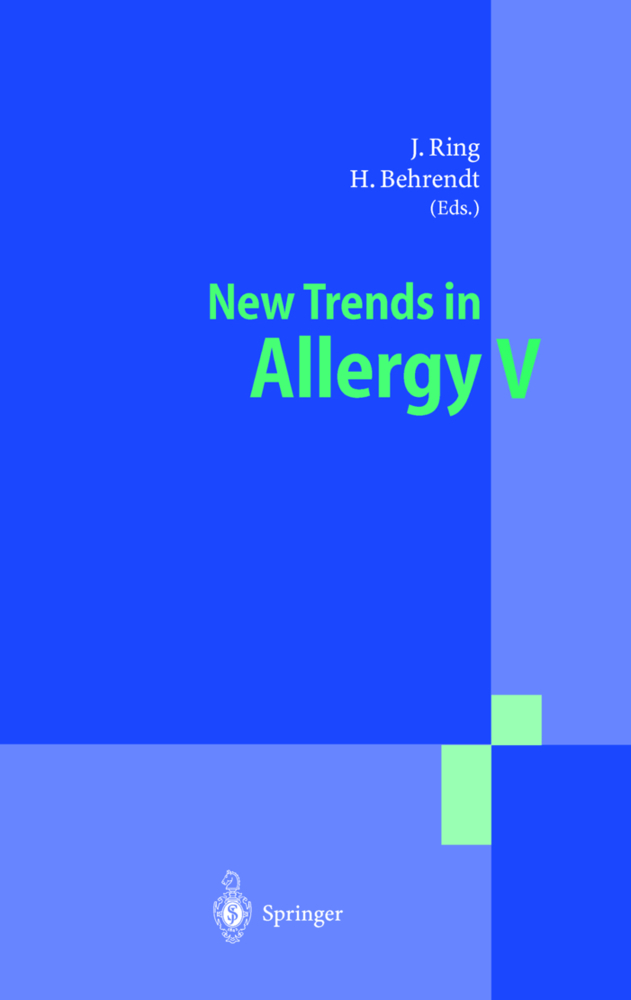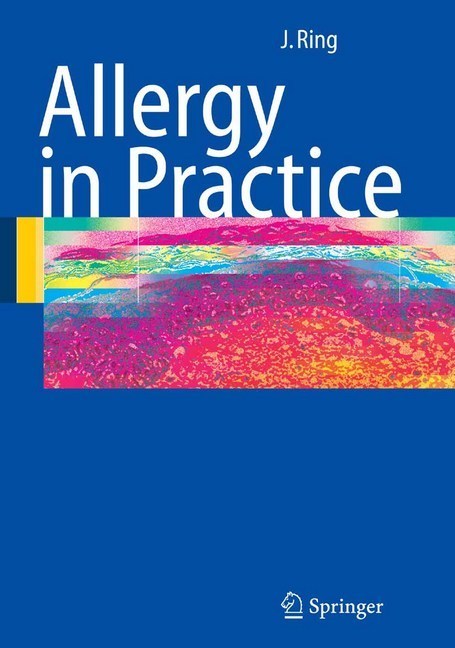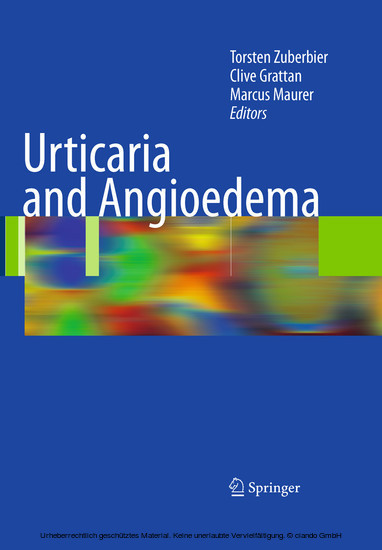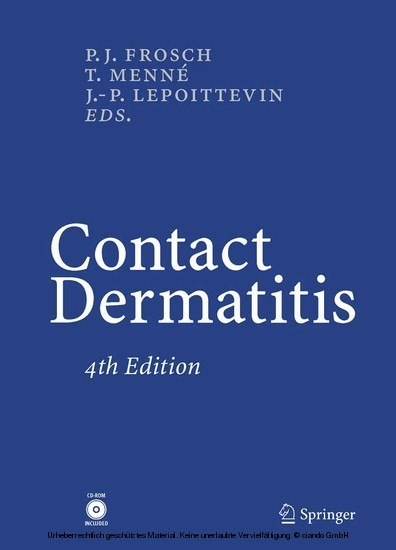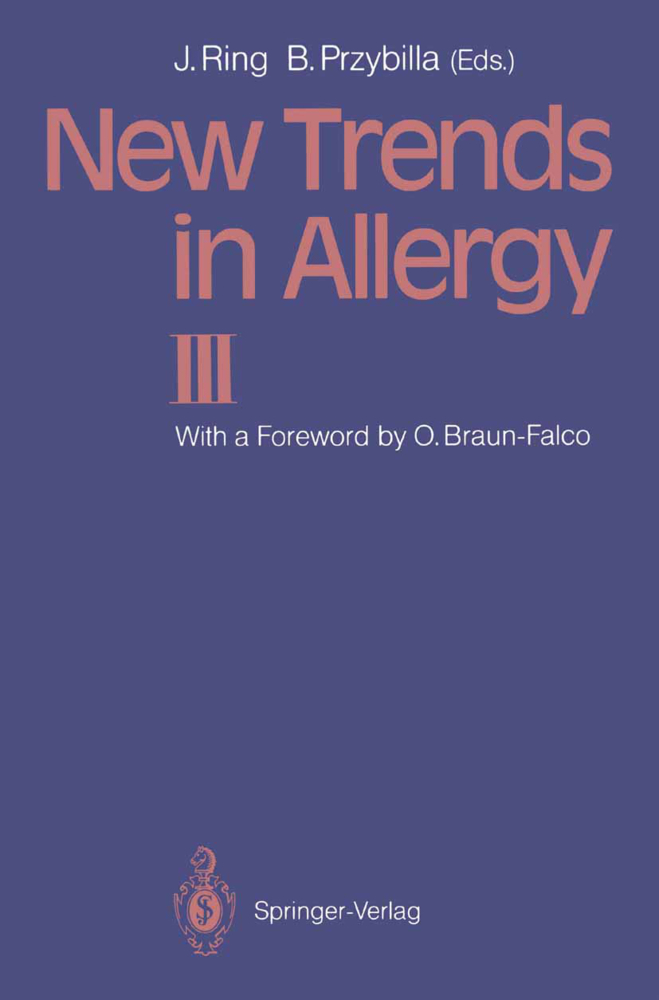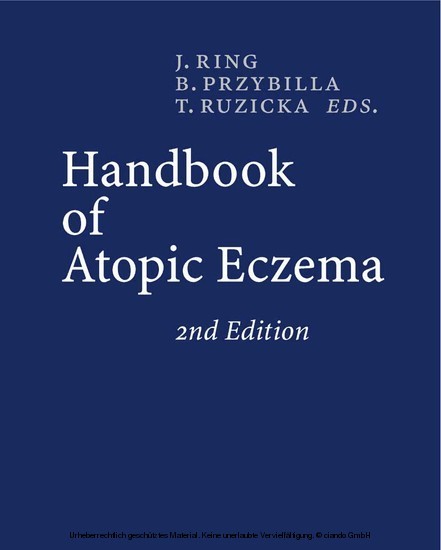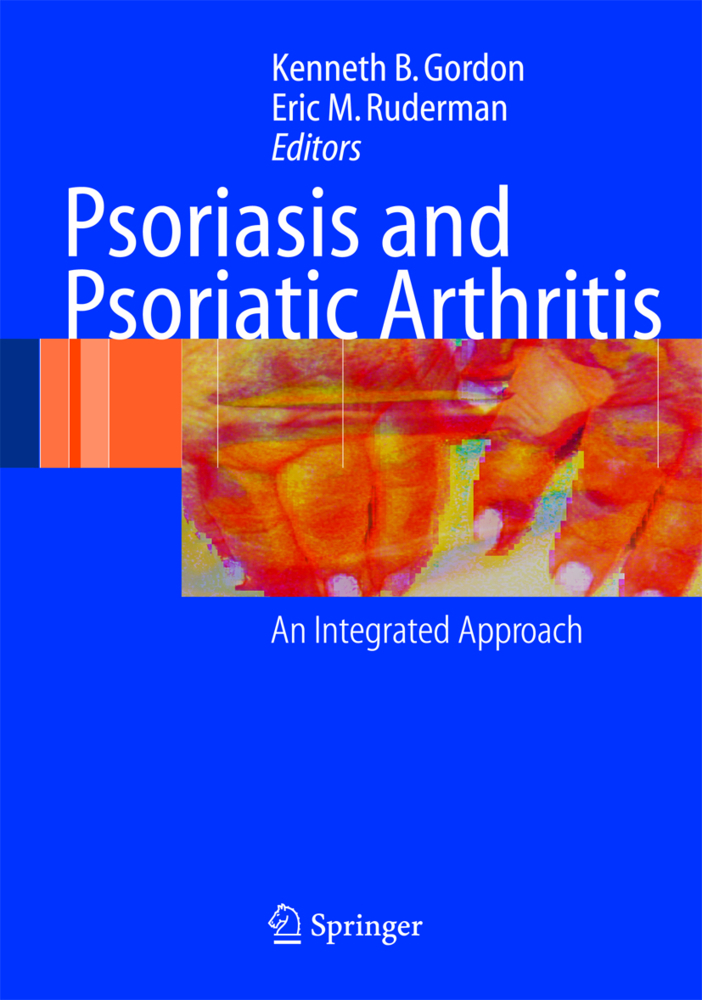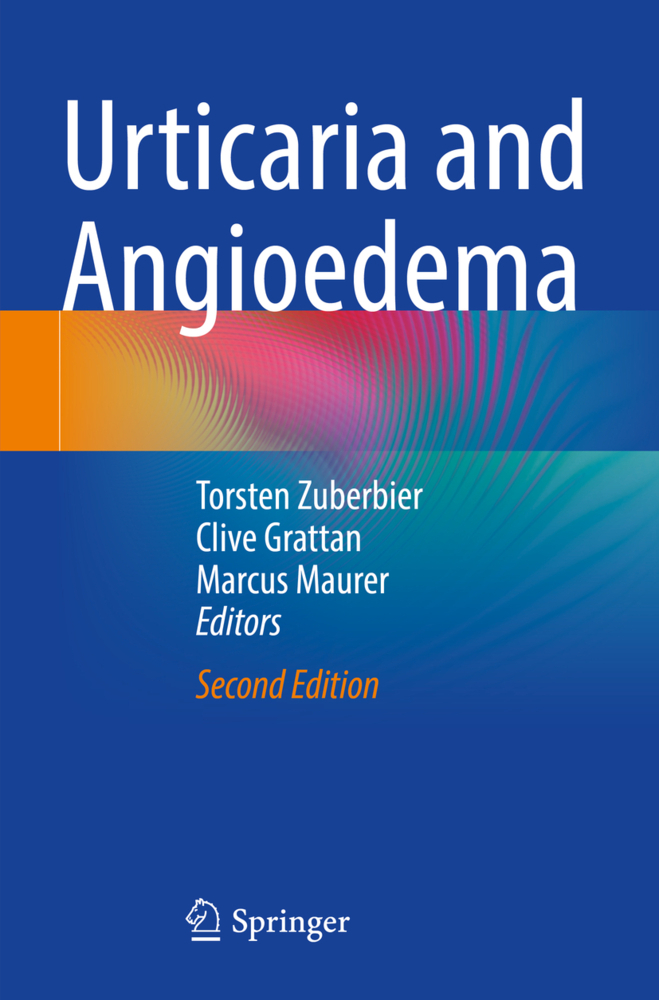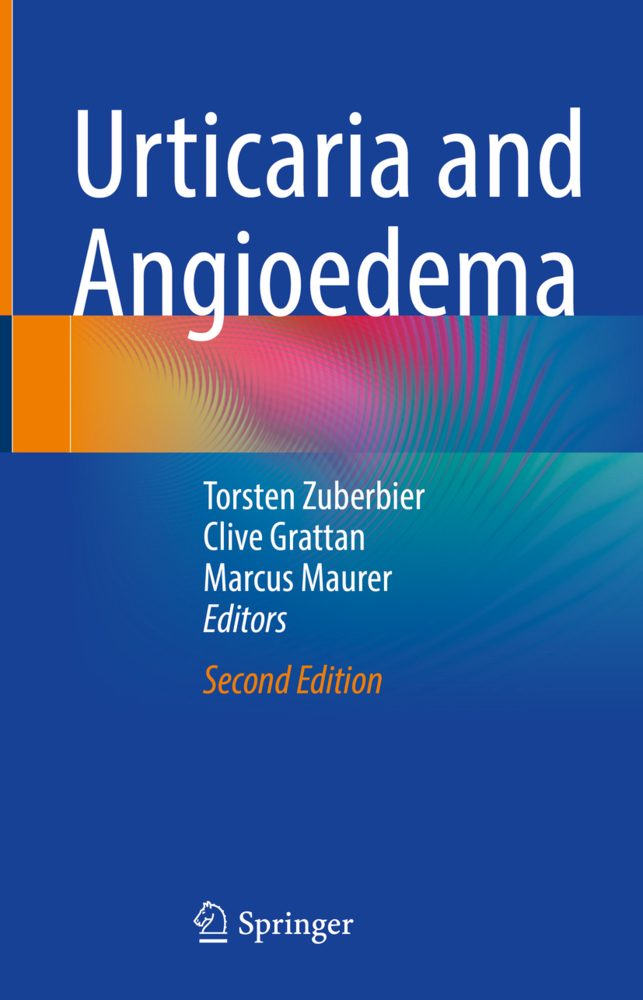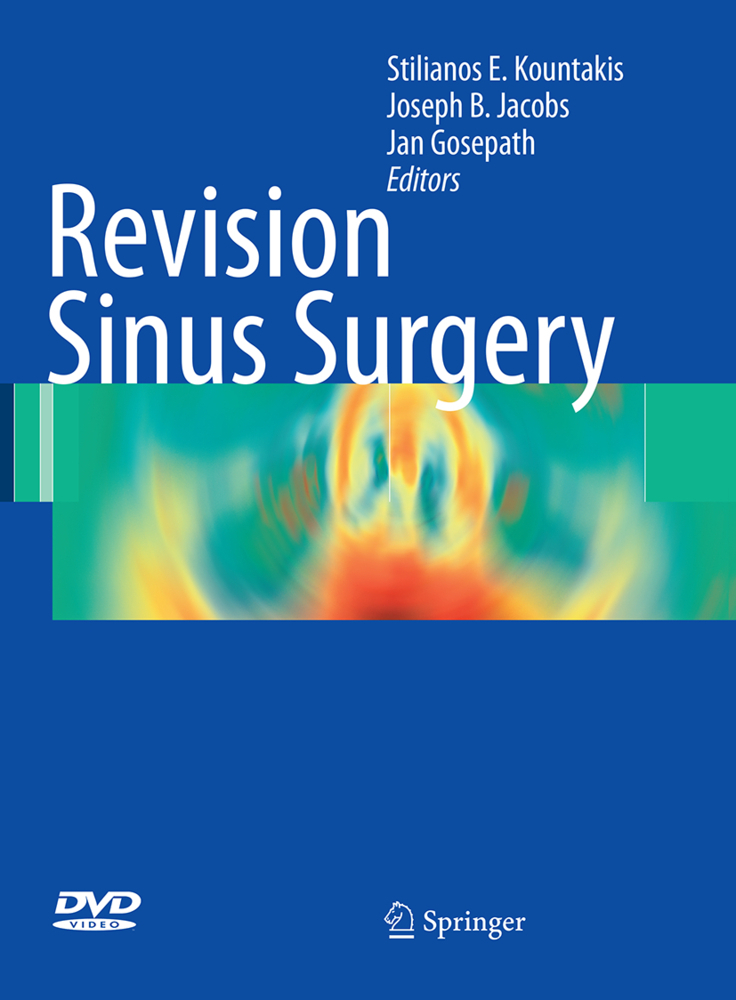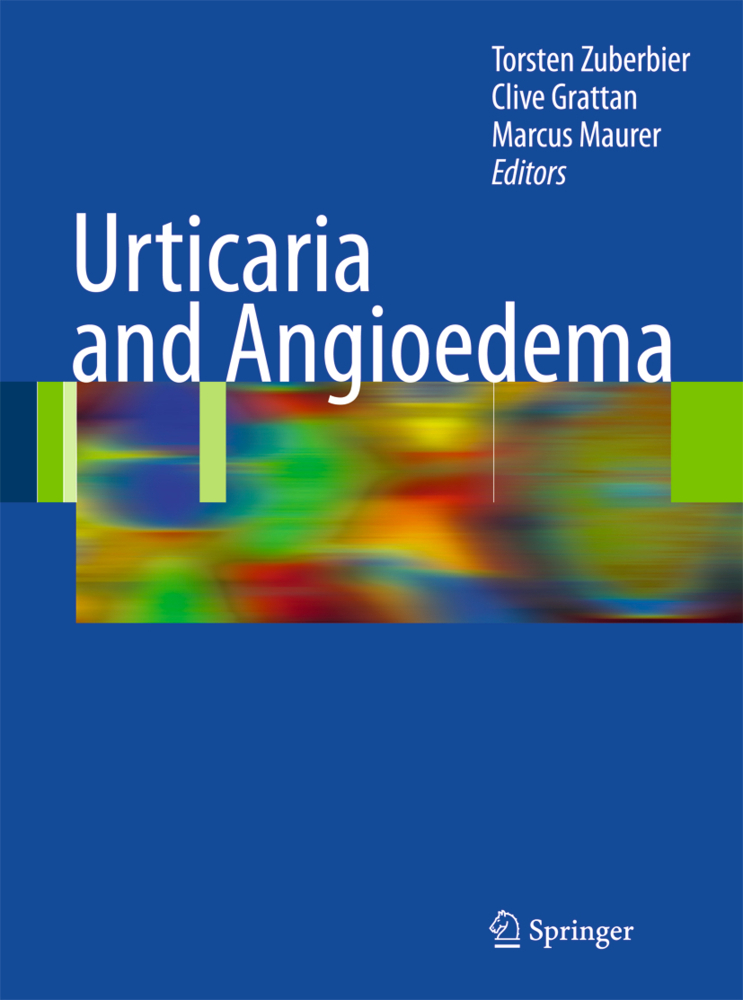New Trends in Allergy V
New Trends in Allergy V
New Trends in Allergy V' is the fifth volume of a series focussing on new trends in experimental and clinical allergology. The interdisciplinary character is documented by articles from such different fields as basic immunology, chemistry, molecular biology, pharmacology, epidemiology, pneumology, dermatology, otolaryngology, pediatrics and psychosomatic medicine. Special emphasis is given to the role of both anthropogenic (pollutants) as well as natural environmental factors in the development of allergy. Among new pathophysiological concepts, dendritic cells, lymphocyte interactions, mast cells, eosinophils and neutrophils as well as psycho-neuro-immunological influences are featured. Practical aspects focus on asthma, rhinoconjunctivitis, atopic eczema, occupational and food allergy as well as anaphylaxis. The most recent therapeutic strategies comprise novel pharmacotherapy and allergen-specific as well as unspecific (e. g. anti-IgE) immunotherapy.
3 Pharmacogenetics of ?2-Adrenoceptor and Asthmatic Phenotypes
4 Pertussis Vaccination Is Not Associated with a Higher Prevalence of Allergies in Six-Year-Old Children from West Germany
5 Human Allergogeneticists Should Listen to Their Dog's Barking
6 Neuro-Immune Interaction in Allergy and Asthma
7 Cadherin Biology of Langerhans Cells
8 CD8 T Cell-Dendritic Cell (DC) Interaction in the Regulation of IgE
9 MHC Class II-Restricted T Cell Activation by Mouse and Human Mast Cells: Potential Clinical Implications
10 T Cell Reactivity Against Timothy Grass Pollen Allergens in Allergie Versus Non-Allergie Human Donors: Epitope Recognition and Cytokine Profile
11 ?1,3-Fucosyltransferase VII mRNA Expression Is Induced by Superantigens and Blocked by Inhibitors of NF-?B
12 Dendritic Cells and Tolerance
13 Eosinophils Maintain Their Capacity to Degranulate upon Repetitive Stimulation with the Same Agonist
14 Mast Cells as Initiators and Effectors of Allergie Inflammation
15 Modulation of Skin Barrier Function
16 T Cells and Effector Mechanisms in Atopic Dermatitis
17 Material-Odor Analysis as a Prerequisite for the Allergological Evaluation of Outgassing Odoractive Volatile Compounds
18 The Atopy Patch Test: Use and Perspectives
19 The Intrinsic Type of Atopic Dermatitis Is Characterised by a Low Expression of the High-Affinity IgE Receptor F??RI on Epidermal Dendritic Cells
20 Staphylococcal Exotoxins as Trigger Factors of Atopic Dermatitis
21 Peanut Allergy: Are Clinical SymptomsAssociated with IgE-Reactivity to Certain (Recombinant) Peanut Allergens?
22 Challenge Tests with Food Additives and Aspirin in the Diagnostics of Chronic Urticaria. A Case of Immediate Cutaneous Hypersensitivity to Sodium Bisulphite (E-222) Confirmed by Patch Testing
23 Serum Sickness as a Clinical Model for Food Intolerance
24 Role of Tryptase in Anaphylaxis
25 Practical Approach to Adverse Food Reactions
26 Multiple Chemical Sensitivity and Others: Allergological, Environmentaland Psychological Investigations in Individuals with Indoor Air-Related Complaints
27 Latex Allergens and Latex Allergy
28 Long-Term Course of Natural Rubber Latex Sensitization and Allergy
29 Long-Term Continuous Antiallergic Treatment Reduces Symptoms and Controls Allergie Inflammation Better than Symptomatic Treatment
30 Rapid Onset and Sustained Efficacy of Desloratadine in Treatment of Chronic Idiopathic Urticaria
31 Preclinical Efficacy and Antiallergic Profile of Desloratadine, a Potent Histamine H1-Receptor Antagonist
32 Desloratadine Is Effective at Relieving Nasal Congestion, as Demonstrated in Three Placebo-Controlled Trials in Patients with Seasonal Allergie Rhinitis
33 Novel Concepts on Allergie Rhinitis: From Pathogenesis to Treatment
34 CpG Oligodeoxynucleotides and Their Potential Role in the Immunotherapy of Allergie Diseases
35 Allergen 3-D Structure-Based Design of Future Vaccines for Specific Allergy Vaccination
36 Immunological Mechanisms of Anti-IgE Treatment.
1 Pollen Grains Contain and Release Not Only Allergens, but Also Eicosanoid-Like Substances with Neutrophil Chemotactic Activity: A New Step in the Initiation of Allergie Sensitization?
2 House Dust Mites in Stuffed Toys as a Cause of Allergy in Lithuania3 Pharmacogenetics of ?2-Adrenoceptor and Asthmatic Phenotypes
4 Pertussis Vaccination Is Not Associated with a Higher Prevalence of Allergies in Six-Year-Old Children from West Germany
5 Human Allergogeneticists Should Listen to Their Dog's Barking
6 Neuro-Immune Interaction in Allergy and Asthma
7 Cadherin Biology of Langerhans Cells
8 CD8 T Cell-Dendritic Cell (DC) Interaction in the Regulation of IgE
9 MHC Class II-Restricted T Cell Activation by Mouse and Human Mast Cells: Potential Clinical Implications
10 T Cell Reactivity Against Timothy Grass Pollen Allergens in Allergie Versus Non-Allergie Human Donors: Epitope Recognition and Cytokine Profile
11 ?1,3-Fucosyltransferase VII mRNA Expression Is Induced by Superantigens and Blocked by Inhibitors of NF-?B
12 Dendritic Cells and Tolerance
13 Eosinophils Maintain Their Capacity to Degranulate upon Repetitive Stimulation with the Same Agonist
14 Mast Cells as Initiators and Effectors of Allergie Inflammation
15 Modulation of Skin Barrier Function
16 T Cells and Effector Mechanisms in Atopic Dermatitis
17 Material-Odor Analysis as a Prerequisite for the Allergological Evaluation of Outgassing Odoractive Volatile Compounds
18 The Atopy Patch Test: Use and Perspectives
19 The Intrinsic Type of Atopic Dermatitis Is Characterised by a Low Expression of the High-Affinity IgE Receptor F??RI on Epidermal Dendritic Cells
20 Staphylococcal Exotoxins as Trigger Factors of Atopic Dermatitis
21 Peanut Allergy: Are Clinical SymptomsAssociated with IgE-Reactivity to Certain (Recombinant) Peanut Allergens?
22 Challenge Tests with Food Additives and Aspirin in the Diagnostics of Chronic Urticaria. A Case of Immediate Cutaneous Hypersensitivity to Sodium Bisulphite (E-222) Confirmed by Patch Testing
23 Serum Sickness as a Clinical Model for Food Intolerance
24 Role of Tryptase in Anaphylaxis
25 Practical Approach to Adverse Food Reactions
26 Multiple Chemical Sensitivity and Others: Allergological, Environmentaland Psychological Investigations in Individuals with Indoor Air-Related Complaints
27 Latex Allergens and Latex Allergy
28 Long-Term Course of Natural Rubber Latex Sensitization and Allergy
29 Long-Term Continuous Antiallergic Treatment Reduces Symptoms and Controls Allergie Inflammation Better than Symptomatic Treatment
30 Rapid Onset and Sustained Efficacy of Desloratadine in Treatment of Chronic Idiopathic Urticaria
31 Preclinical Efficacy and Antiallergic Profile of Desloratadine, a Potent Histamine H1-Receptor Antagonist
32 Desloratadine Is Effective at Relieving Nasal Congestion, as Demonstrated in Three Placebo-Controlled Trials in Patients with Seasonal Allergie Rhinitis
33 Novel Concepts on Allergie Rhinitis: From Pathogenesis to Treatment
34 CpG Oligodeoxynucleotides and Their Potential Role in the Immunotherapy of Allergie Diseases
35 Allergen 3-D Structure-Based Design of Future Vaccines for Specific Allergy Vaccination
36 Immunological Mechanisms of Anti-IgE Treatment.
Ring, Johannes
Behrendt, Heidrun
| ISBN | 978-3-540-43082-7 |
|---|---|
| Artikelnummer | 9783540430827 |
| Medientyp | Buch |
| Copyrightjahr | 2002 |
| Verlag | Springer, Berlin |
| Umfang | XVI, 301 Seiten |
| Abbildungen | XVI, 301 p. |
| Sprache | Englisch |

